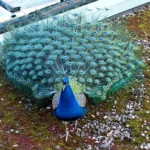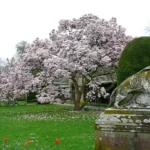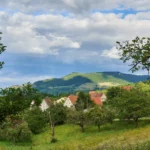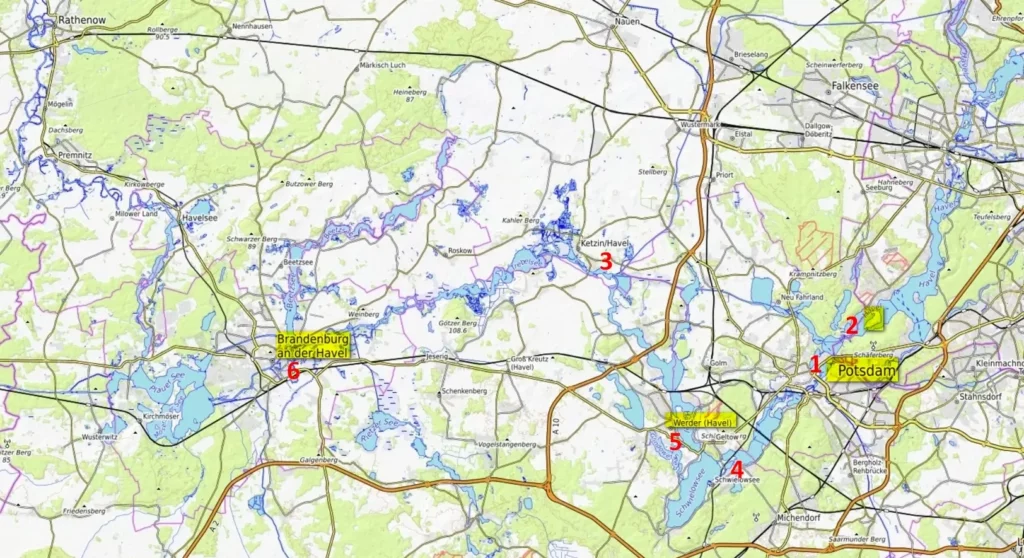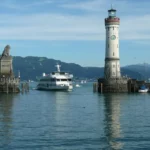Last Updated on 19/11/2023
Apart from Wilhelma, Stuttgart does not have many top sights or architecture. The city was badly damaged during the Second World War.
But if you happen to be here for a couple of days, you will not regret it. Stuttgart is a pretty city with a lot of parks and high hills all around. Children, and many adults alike, will be delighted with Wilhelma. Adults – with plenty of shops concentrated in the center and the Mercedes-Benz Museum. Without tiring yourself too much, you can explore the small center and relax in the thermal pool in the evening.
Not far from the city of Ludwigsburg – the country residence of the Dukes / Kings of Württemberg with a beautiful park. It is mustsee in the autumn during the pumpkin festival.
Of the possible excursions: Esslingen, Bebenhausen and Tübingen, the Hohenzollern castle, Bad Urach. Waterfall
You will find other possible excursions Around Stuttgart places to visit map
North Black Forest. What to see
Schwäbisch Gmünd and Aalen
Note the ban on diesel cars in Stuttgart (plaque 5 or worse). Alternative parking opportunity are minimal, a system for changing to public transport has not been created.
A little of history
The settlement in a place protected by steep slopes and a river arose a long time ago. Remains of a Roman camp have been found at the site of the Bad Cannstatt area. Settlements of various periods are found on the territory of the city. In particular, during the rebuilding of the station, parts of buildings of the 3-4th centuries were found in good preservation.
But the city itself began to grow later. In the 10th century, horse breeding stables (Stuotgarten) were established in the bend of the river. In the 13th century, the site was donated to the Counts of Württemberg. At the same time, they began to build the first fortress on the site of the modern “old palace” – Altes Schloss.
For many centuries the city and the county were ruled by counts, then the dukes of Württemberg. At the beginning of the 19th century, they even grew to the rank of kings and took wives from the sisters of the Russian tsars.
What to see in Stuttgart
It is not difficult to orientate in Stuttgart: the historical center is small, it starts almost immediately from the station. The main pedestrian street Königstrasse leads to the New and Old Palaces, the State Gallery, the modern art museum (Kunstmuseum), the preserved old Bohnenviertel district. Königstrasse is also the main shopping street.
A series of Palace parks begins behind the New Palace – they go to the Neckar. In the Lower Park, near the Neckar, on a hill is the Rosenstein Palace (Museum of Natural Sciences). A little further – the wonderful Wilhelm Zoo and Botanical Gardens and mineral springs in Bad Cannstatt. The city has four thermal pools with mineral water.
The city can be viewed from above by climbing one of the high hills surrounding it, for example, to the television tower. But if there is no time, you can just climb the station tower, to the Mercedes sign that adorns it (free).
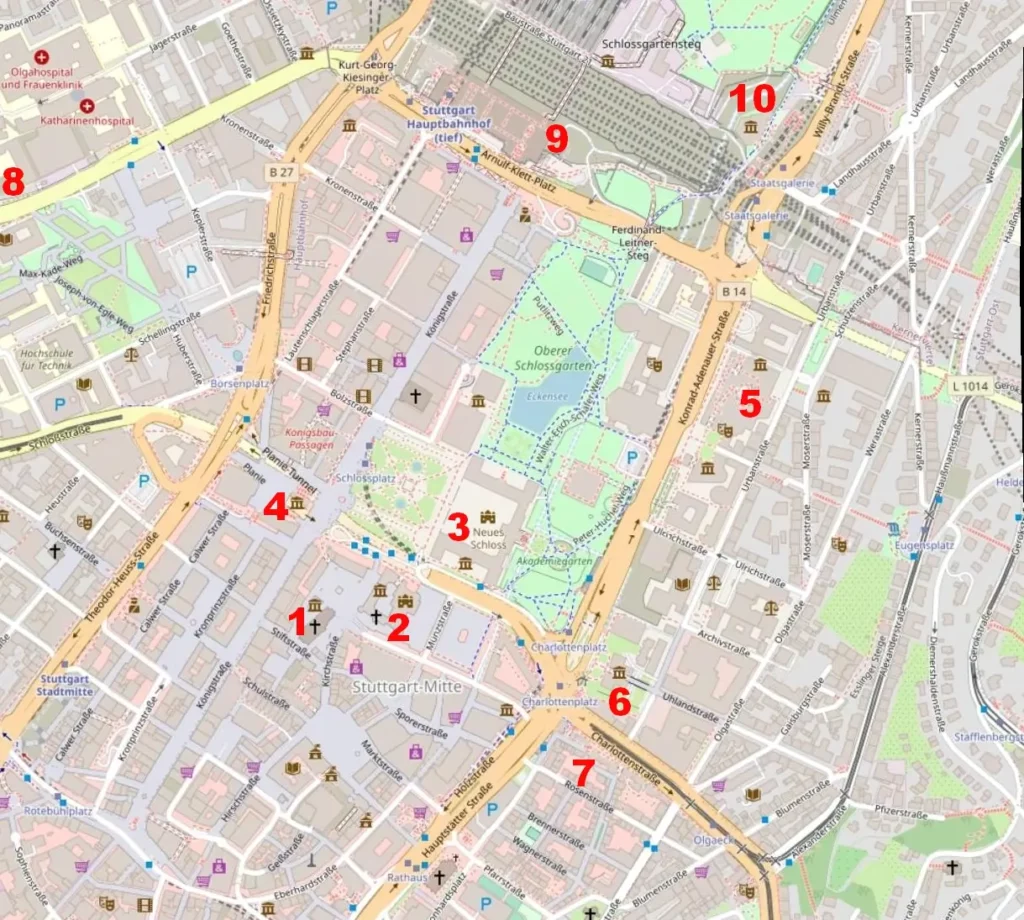
City centre
Altes Schloss
The Old Palace (2) was built around 941 as a simple castle surrounded by water to protect the stud farm. It gradually expanded, and from the 13th century became the residence of the counts and then the dukes of Württemberg. It was a residence until the 18th century, when Duke Karl Eugene demanded the construction of a new, more suitable palace.
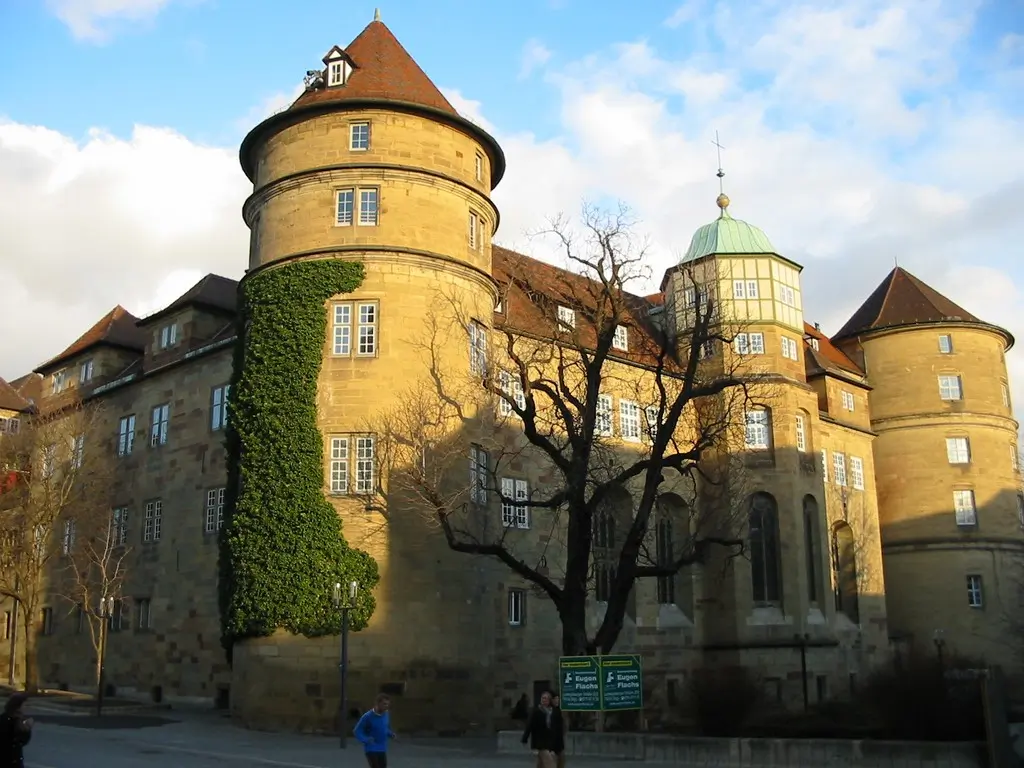
Outside, the palace, despite multiple reconstructions, has remained a medieval castle. Up to the 16th century, it was surrounded by a 7-8-meter moat in which fish were found, then bears and deer were kept. In the 18th century the moat was filled up.
The courtyard with three floors of galleries is quite original among the structures of this kind, characteristic of the Renaissance era in southern Germany and Italy.
The interiors of the palace have practically not survived. One room in the palace has retained its historical appearance – the Quersaal. Now the palace houses a historical museum.


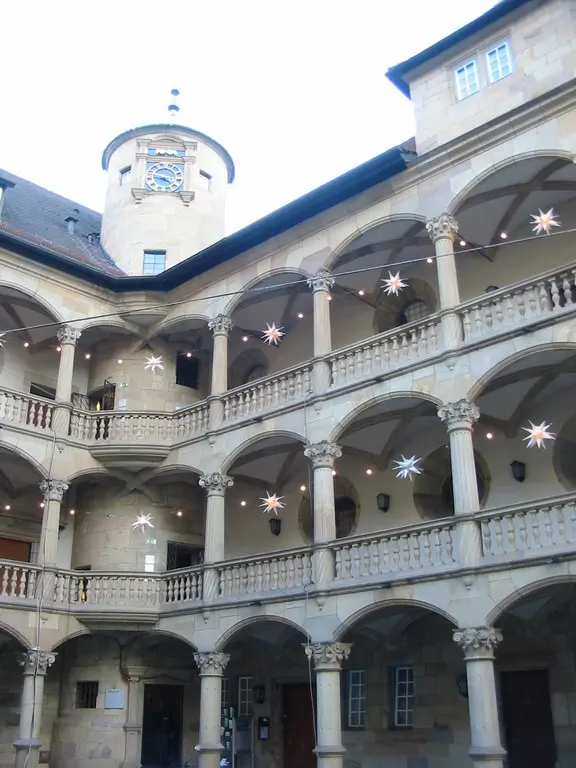
Neues Schloss
The New Palace (3), built by Duke Karl Eugene of Württemberg (1744-1793), is the last large Baroque residence in Germany. The duke demanded from the city and representatives of Württemberg that the residence be in accordance with his royal dignity and be similar to Versailles.
From 1806 the New Palace became the seat of the kings of Württemberg until the middle of the 19th century. Now it houses the government of Baden-Württemberg. Access to visitors is closed.
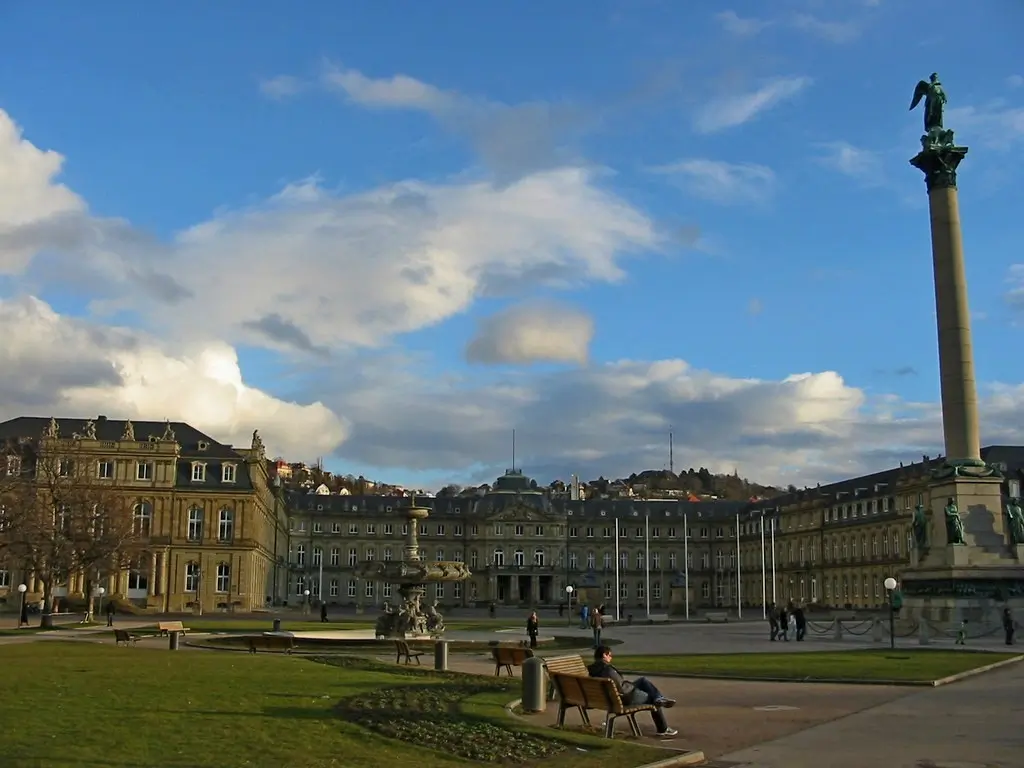
Collegiate church
The church (1) is located on Schillerplatz square (until the 19th century – Palace Square) in front of the Old Palace. The first building on this site was built at the end of the 12th century. In 1240 and 1325 it was being completed. The last changes in the Gothic style were made in 1531 (tower). This church is the main Protestant church in Württemberg.
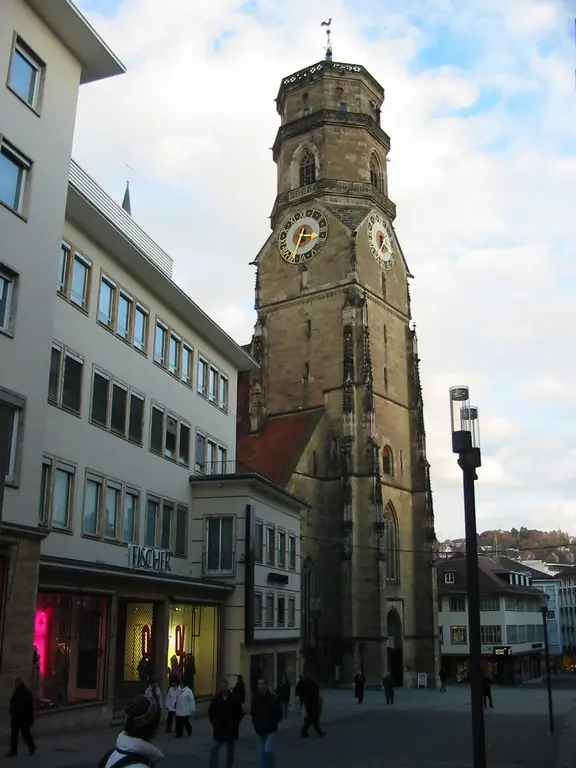
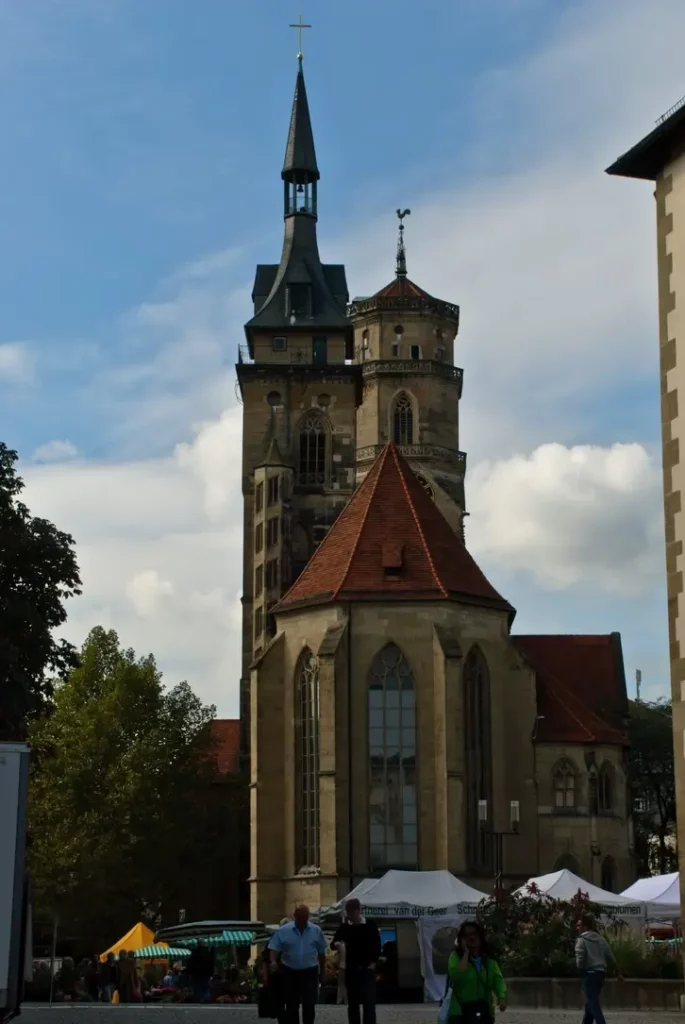
Also on the square are Prinzenbau and the Old Chancellery (Alte Kanzlei). Prinzenbau was built at the beginning of the 17th century for the duke’s brother. It was destroyed during the Second World War. And after the restoration, the Ministry of Justice of Baden-Württemberg was located in it. The Old Chancellery was built in the middle of the 16th century, where the chancellery of Duke Ulrich was located.
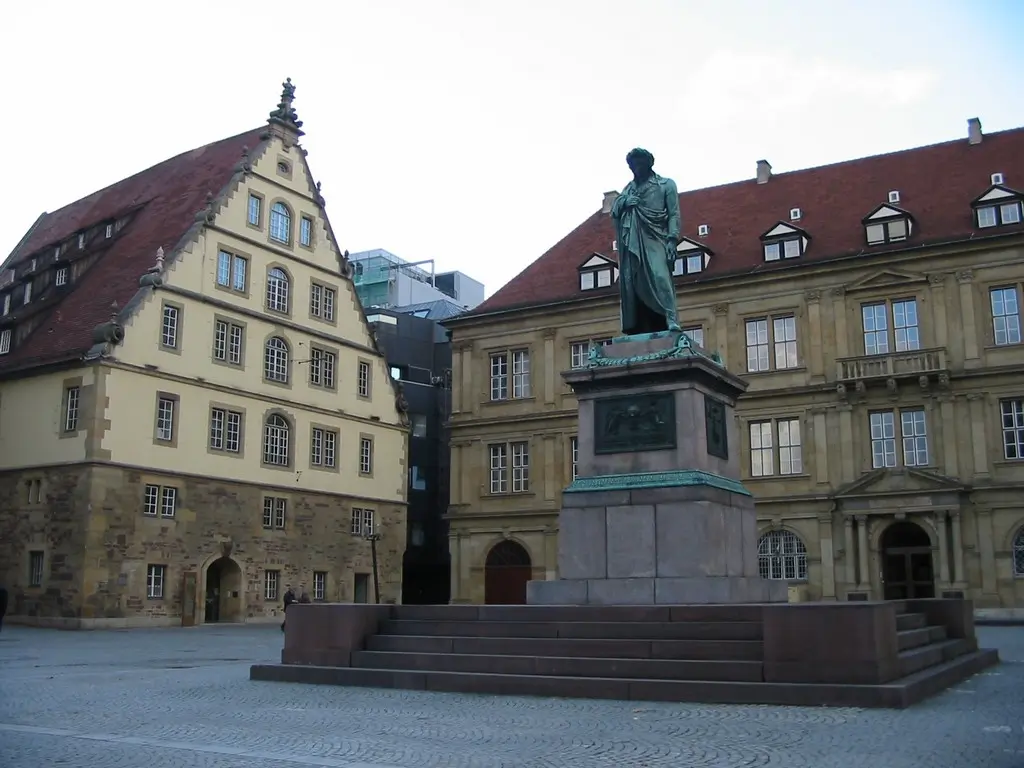
Follow me
Art Museums: State Gallery (Staatsgalerie) and Art Museum (Kunstmuseum)
Art museums are also in the centre. The State Gallery (5) consists of two parts (old and new) and occupies three buildings.
The Old State Gallery of Stuttgart was built in the middle of the 19th century by King William 1 of Württemberg. Located behind the New Palace, across the park, and behind the State Theater. It contains paintings and drawings from the 14th-19th centuries, as well as illustrated books, posters and photographs. The collection is based on the collection of the Dukes of Württemberg. There are works by Canaletto, Memling and Rembrandt.
The New Gallery is linked to the Old with passage. Here are works of art from the 20th century. It is the works of the 20th century that make up the center of the collection of the State Gallery.
Kunstmuseum (4) – a completely new museum, located opposite the New Palace. Here are the works of contemporary artists, the collection is based on the works of Otto Dix.
Other interesting places in the center include the small old district with restaurants and antique shops Bohnenviertel (7), the brand new museum of the city – Museum für Stuttgart (6), the Ethnological Linden Museum (8), the observation deck on the station tower (9) and the planetarium (10).
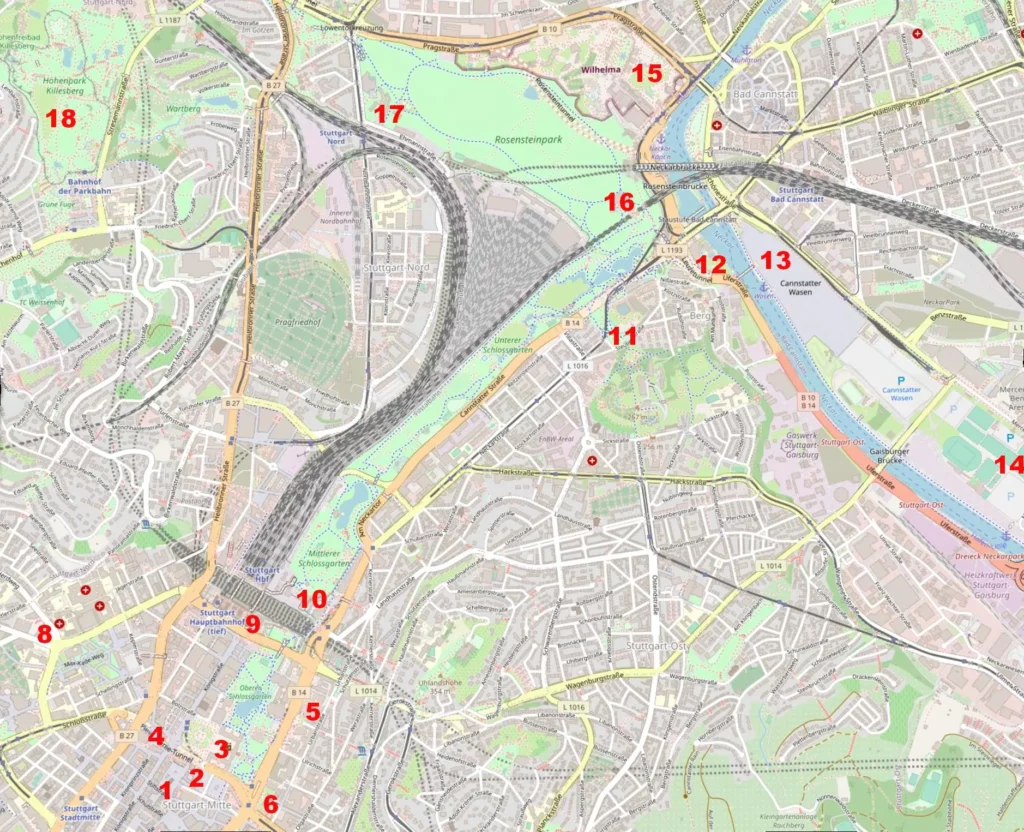
Not in the center
You can, of course, walk along the green circle for an hour to Wilhelma. But the zoo-botanical garden is very big, so it is better to use the U-bahn.
Wilhelma
About Wilhelma (15) in a separate entries: Flowers, Animals
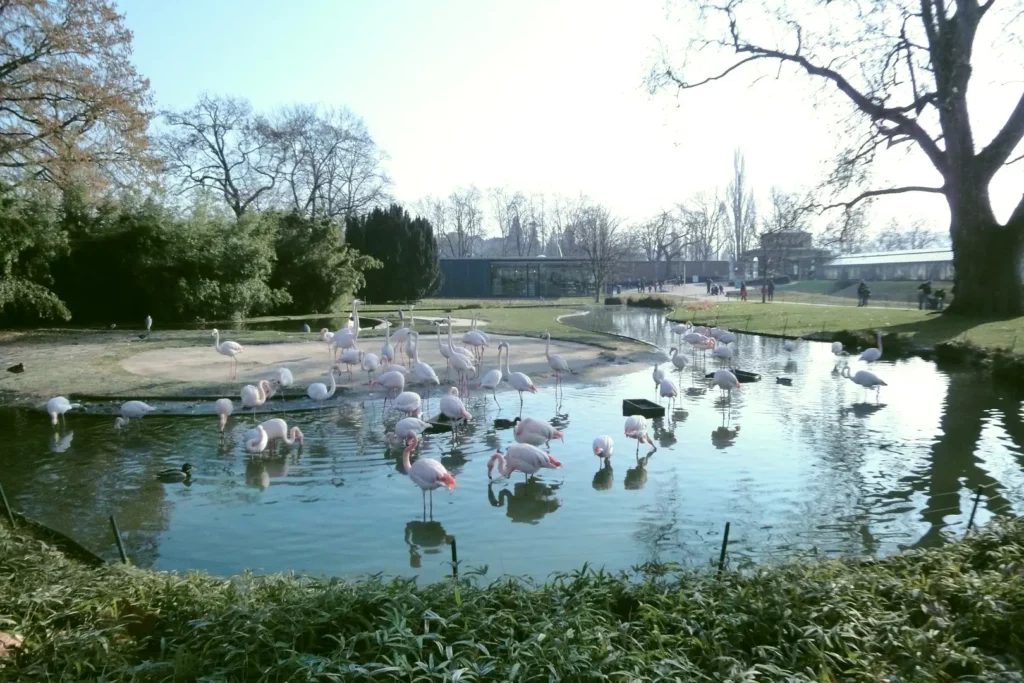
Schloss Rosenstein
The classicist building (16) on a hill above the Neckar was built during the reign of King William I in 1829 for his wife from Russia Catherine. But she died before the palace was built, and the king rarely lived there. Now the palace houses the Museum of Natural History.
The paleontological department of the Natural History Museum is called Museum am Löwentor (17) and is located on the other side of the park. This is a small museum that can be addition to Wilhelma.
On the other side of the railway, on a hill, there is another family park – Killesberg (18). Few animals, playgrounds, an observation tower, a small train, scenic spots and an extensive lawn for outdoor activities – a lot of people come here and this is the only drawback of the park.
Downstairs, near the Rosenheim Palace and the Neckar, there are two thermal pools: Berg and Leuze (11 and 12).
Point 13 makes sense during the holidays: Oktoberfest or Advent. Baden-Württemberg is a wine region, but Stuttgart is one of the few places where Oktoberfest is also celebrated. Elsewhere, the Wine Village (Weindorf) is more likely to be found.
Mercedes-Benz Museum
The museum (14) presents the 120-year history of this brand’s cars. From the first cars in the world by Karl Benz and Gottlieb Daimler to the very latest models. Also on display are racing cars.
TV tower
It was built in the middle of the 20th century. Height – 217 m. Except for the low tower of the main station, this is the only observation deck in the city, from which, in addition to the panorama of the city, you can also see the Alps in good weather – however, only the Swabian ones.
You can get there by U7, U8 to the stop Waldau or Ruhbank, Strassenbahn 15, bus. 70.
Schloss Solitude
The palace Solitude (completed in 1769) is located in the woods in the west of Stuttgart. It was also built during the reign of Duke Carl Eugene as a palace for solitude and hunting.
The Rococo palace is reminiscent of the Sanssouci in Potsdam. With another residence, Ludwigsburg, it is connected by a 15-kilometer alley. This alley has survived to this day. At the beginning it is called Solitudstrasse, then Solitudallee, and only in Ludwigsburg itself does it run into houses.
There were rooms for ceremonial receptions in the palace; a garden was laid out around it, which later collapsed. The courtiers entertained themselves with theater, performances, ballet, hunting and fireworks.
Soon enough, Karl Eugene lost interest in the palace. Then a higher military school was opened here, the favorite brainchild of the duke.
In the second half of the 20th century the palace has been completely renovated. Now it houses an art academy. But some of the rooms can be visited.
We go further to Wilhelma and Ludwigsburg, Esslingen, Bad Urach Waterfall.
Around Stuttgart places to visit map
Do you enjoy the site without cookies? This means that I work for you at my own expense.
Perhaps you would like to support my work here.
Or change your cookie settings here. I don’t use personalized ads


